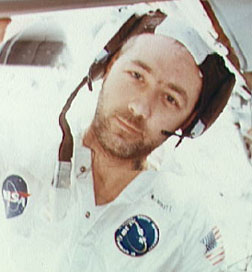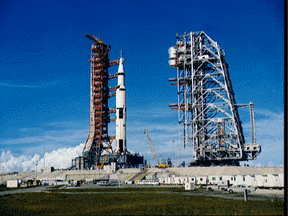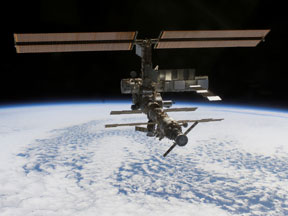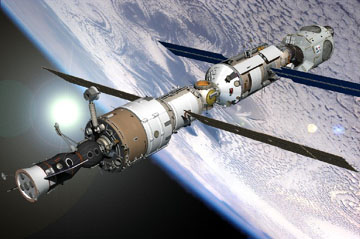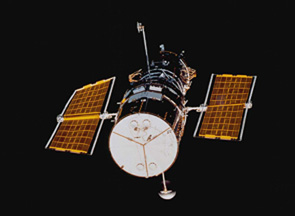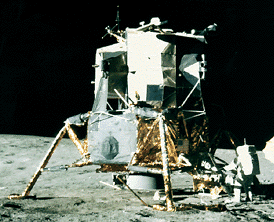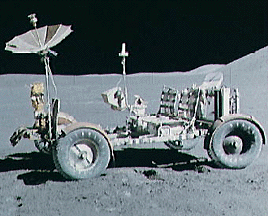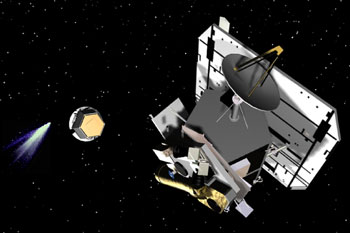Click on image for full size
Courtesy of NASA
Related links:
History of Human Spaceflight
It was not long after the first space satellites were launched that we succeeded in getting a human being into space. These first astronauts and cosmonauts (the Russian word for astronaut) were test pilots who were very familiar with flying in fast and dangerous planes! The first human being to travel into space was Yuri Gagarin (USSR, 1961), followed a month later by the US astronaut Alan Shepard.
Once we found out that humans could travel in space, a "space race" quickly developed between the United States and the Soviet Union. The United States main interest was to land on the moon. The Soviet Union was more interested in setting endurance records and doing scientific research.
The United States was upset that the Soviets always seemed to be first in everything in the space program. Therefore, the U.S. made the goal to land on the moon...first. In 1961, President Kennedy made a famous speech in which he challenged the country to land an astronaut on the moon and safely return him to the Earth by the end of the decade. Through a sequence of human spaceflight and robotic space mission programs, including Mercury, Gemini, and Apollo, the United States finally succeeded in landing the first human beings on the Moon in 1969 with Apollo 11!
After the United States' success of landing on the moon, the government became disinterested in the space program. Fewer missions were planned and the space program became more science-based. NASA started hiring scientists instead of hotshot fighter pilots into the astronaut program. In 1973, the first American space laboratory was shot into orbit, and scientific experiments began to take place. Between 1973-1981, the United States scheduled only one or two human spaceflight missions.
Finally in 1981, the United States revamped its human spaceflight program with several new missions and a brand new spacecraft design, the space shuttle. The space shuttle is a reusable craft that works much like an airplane but with a lot more power. The shuttle missions have become the workhorse of NASA's space program. The government once again became interested in the space program as President Reagan's defensive Star Wars agenda took effect. Several shuttle missions became defensive ones as several satellites and other classified things were placed into orbit around the earth.
The space shuttle also began to have more and more scientific missions. Some of the more significant missions included the deployment of the Hubble Space Telescope in 1990 and a tethered satellite mission. Currently, the NASA human spaceflight program is primarily a scientific one as the missions explore the solar system and develop new engineering capabilities in space.
In the meantime, the Soviets made several missions testing out new spacecraft and became the first to create a space station. Throughout the 1960s, the cosmonauts practiced rendezvous with other human spaceflight missions and robotic spacecraft.
From the late 1960s to the 1980s, the Soviet program conducted scientific experiments in space, including engineering capabilities. In 1971, the cosmonauts spent several days aboard the first space station. The cosmonauts continued to spend time on several space station since then, breaking several endurance records in space. Laboratory experiments were conducted on all of these space stations, and the Soviets made great strides in expanding our knowledge of space, medicine, and engineering.
Beginning in 1978, the Soviet program began to allow international astronauts onto their missions. The Soviet program continued to break ground in science with the Mir space station. And as of November of 2000, the International Space Station opened its doors to its first visitors, Russian and American!


